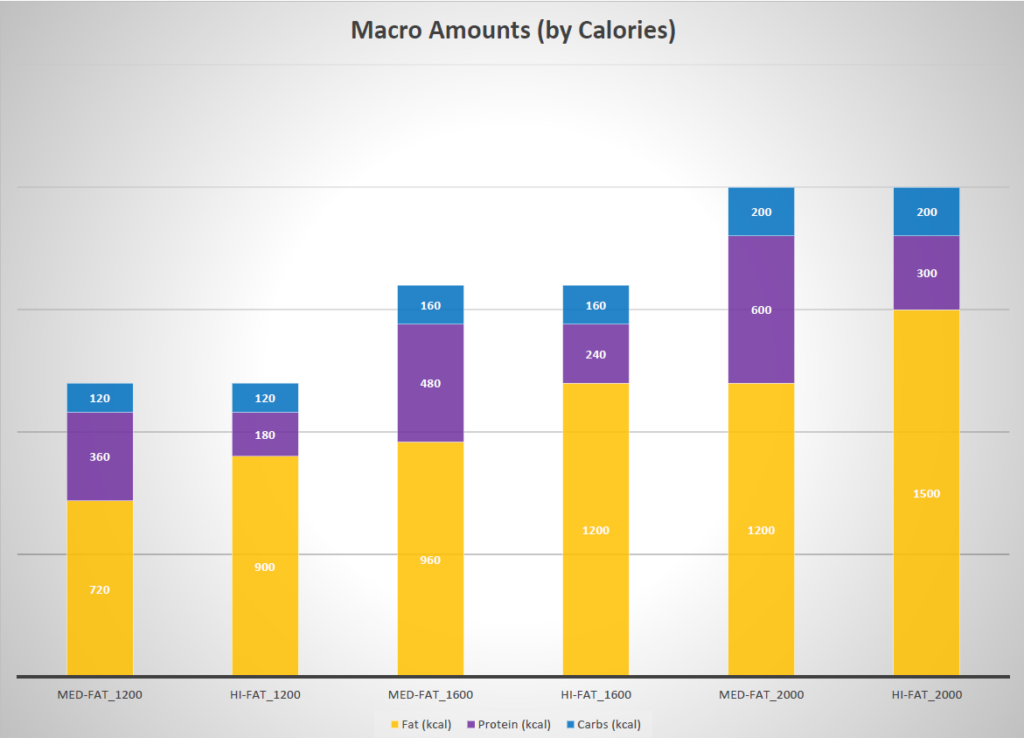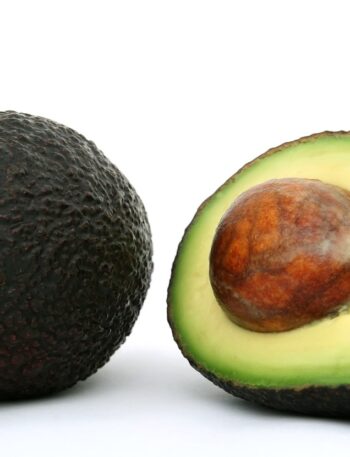Welcome to the start of a remarkable journey towards better health and vitality—the ketogenic (keto) diet. I’m thrilled to guide you through the essential steps of embracing the keto lifestyle, achieving the state of ketosis, and sustaining it for months to come. Let’s embark on this transformative path together.
Understanding the Keto Diet: A Brief Overview
At its core, the keto diet involves a significant shift in your body’s energy source—from carbohydrates to fats. Carbs are what bread, potatoes, rice, noodles, etc. are chock full of. Notice how that’s the main staple in pretty much every meal we make or are served when we eat out. What does your sandwich or burger come on? Buns. What’s served before dinner? Breadsticks or dinner rolls. What’s the most-eaten food in the world? Rice. It’s hard to escape the influence of carbs, but it’s certainly not impossible. Carbs are just one of the big three macronutrients that we eat every day; the other two are proteins and fats.
The ketogenic diet creates a metabolic change which leads to a state known as ketosis, where your body relies on fat for fuel, resulting in weight loss, mental clarity, and numerous health benefits.
- Understanding the Keto Diet: A Brief Overview
- How to Start Keto
- Step 1: Educate Yourself on Keto Fundamentals
- Step 2: Calculate Your Macros for Personalization
- Step 3: Strategize Your Meal Plans and Snacks
- Step 4: Mindful Monitoring of Carb Intake
- Step 5: The Power of Healthy Fats
- Step 6: Prioritize Hydration and Electrolyte Balance
- Step 7: Managing the Keto Flu
- Step 8: Listen to Your Body’s Signals
- Step 9: Embrace Mindful Eating Practices
- Step 10: Stay Consistent and Track Progress
- Step 11: Seeking Expert Guidance
- Transitioning from Weeks to Months: Sustaining Your Keto Journey
How to Start Keto
Step 1: Educate Yourself on Keto Fundamentals
Begin your journey by immersing yourself in the basics of the keto diet. Gain insights into the three primary macronutrients: fats, proteins, and carbohydrates. Transitioning to a low-carb, high-fat diet necessitates substituting carb-rich foods with healthy fats and moderate protein sources.
Understanding how ketosis works and the science behind it empowers you to make informed choices throughout your keto journey.
Step 2: Calculate Your Macros for Personalization
Personalization is a cornerstone of the keto diet. By using an online keto calculator, you can determine your ideal daily macronutrient intake. This calculation ensures you maintain a specific ratio of fat, protein, and carbohydrates. Typically, the keto macronutrient breakdown is around 70-75% fats, 20-25% protein, and 5-10% carbohydrates. The percentages are based on the percentage of your daily caloric intake. Let’s go through some examples if we are aiming for 70% calories from fat, 20% from protein, and the rest (10%) from carbs:
| Daily Calories (kcal) | Fats (kcal) | Fats (g) | Protein (kcal) | Protein (g) | Carbs (kcal) | Carbs (g) |
| 1200 | 840 | 93 | 240 | 60 | 120 | 30 |
| 1600 | 1,120 | 124 | 320 | 80 | 160 | 40 |
| 2000 | 1,400 | 156 | 400 | 100 | 200 | 50 |
The percentages translate like this: 1 gram of carbs gives your body 4 Calories, 1 gram of proteins gives your body 4 Calories, but 1 gram of fats yields more than double what the other macronutrients provide, coming in at 9 Calories. It is important to keep your carbs low on the keto diet. 30 grams of carbs is typically the most you would want to eat in a day, with 50 grams being the absolute max, as going over that limit can kick you out of ketosis (and that max amount of grams may vary depending on your body type and how it responds to being in ketosis).
Here are some charts that explore what different daily calorie intakes and macro ratios will look like for you.

If you follow a medium fat keto diet (around 60% fat, 30% protein, 10% carbs), your calorie intake could range from 1200-2000 Calories per day in the above chart, for example. A high fat keto diet (which may have around 75% fat, 15% protein, 10% carbs) provides a certain ratio in the same chart from 1200, 1600, and 200 Calories per day scenarios.
Step 3: Strategize Your Meal Plans and Snacks
A week of keto-friendly meal plans and snacks is your roadmap to success. Embrace whole, nutrient-rich foods such as avocados, fatty fish, lean meats, non-starchy vegetables, and nuts. Emphasizing variety in your meals helps keep your palate engaged and ensures you receive a spectrum of essential nutrients.
Step 4: Mindful Monitoring of Carb Intake
In the initial stages, limit your daily carb consumption to approximately 20-30 grams. As your body adapts to its new fuel source, you can gradually adjust this number. Mindfulness is key; be vigilant about hidden carbs in sauces, dressings, and processed foods.
Step 5: The Power of Healthy Fats
Embrace the realm of healthy fats as a primary energy source. Avocado oil, coconut oil, olive oil, nuts, and seeds become your allies. These fats provide sustained energy, promote satiety, and contribute to the production of ketones.
Step 6: Prioritize Hydration and Electrolyte Balance
Entering ketosis can lead to increased water loss and electrolyte imbalances. Counter this by prioritizing hydration and integrating sodium, potassium, and magnesium-rich foods into your diet. Balanced electrolytes support overall well-being and minimize potential side effects.
Step 7: Managing the Keto Flu
As your body transitions to a fat-burning mode, you might experience what’s known as the “keto flu.” Symptoms like fatigue and headaches arise due to changes in electrolyte levels. To mitigate these effects, stay well-hydrated and increase your intake of electrolyte-rich foods.
Step 8: Listen to Your Body’s Signals
Keto success hinges on tuning into your body’s cues. Eat when hungry, cease when satisfied. Ketosis may naturally reduce your appetite; focus on nutrient density in every meal, ensuring you nourish your body.
Step 9: Embrace Mindful Eating Practices
Drawing from psychology, adopt the practice of mindful eating. Pay attention to genuine physical hunger cues, distinguishing them from emotional triggers. This practice fosters a healthier relationship with food and bolsters your overall wellness journey.
Step 10: Stay Consistent and Track Progress
Consistency is the bedrock of achieving and sustaining ketosis. Keep meticulous records of your meals, macros, and progress. Celebrate milestones and maintain patience in the face of setbacks.
Step 11: Seeking Expert Guidance
Your journey into the keto lifestyle is unique. When encountering challenges or uncertainties, consider seeking counsel from professionals well-versed in the nuances of this diet.
Transitioning from Weeks to Months: Sustaining Your Keto Journey
With the initiation phase behind you, your focus shifts towards maintaining the keto lifestyle for the long haul. As you transition from novice to seasoned keto enthusiast, consider the following strategies:
- Variety is Key: Prevent monotony by continually exploring new keto recipes, ingredients, and flavors. This approach ensures your taste buds remain engaged and excited.
- Master the Art of Meal Prepping: Dedicate a portion of your week to meal preparation. This practice guarantees you have keto-friendly options readily available, minimizing the likelihood of veering off track.
- Navigating Social Scenarios: Maneuvering social events and dining out necessitates careful planning. Opt for keto-friendly choices or consider eating a balanced meal beforehand to resist tempting options.
- Mindful Indulgences: While keto restricts carb consumption, occasional indulgences can be integrated into your journey. Choose wisely and relish each bite, savoring the experience.
- Celebrating Non-Scale Victories: Recognize that victories extend beyond numerical weight loss. Pay attention to improved energy levels, heightened focus, enhanced mood, and overall well-being.
- Listening to Your Progress: Continuously monitor shifts in your body and well-being. Track changes in weight, energy levels, quality of sleep, mental clarity, and overall satisfaction.
- Adaptation Over Time: As your keto journey unfolds, your nutritional requirements may evolve. Periodically reassess your macros and objectives, ensuring they align with your current needs and aspirations.
In closing, remember that the keto lifestyle transcends mere weight loss—it’s a holistic approach to health and wellness. Through steadfast dedication, a positive mindset, and a well-structured plan, you’re well-equipped to harness the transformative potential of the keto diet. This journey is a marathon, not a sprint, and I’m honored to guide you through every phase. Your endeavor has just begun, and I’m here to support your success every step of the way.


